2012 • 12 • 28
Throughout my stay in the Old Quarters in Hanoi, every day was a battle with the countless scooters speeding across the district like it’s nobody else’s business. They were fast, relentless, reckless, oblivious to the crossing pedestrians. Each chance to cross the street was a leap of faith and a test of courage as I faced the possibility that it could be the last street that I would ever see . But that evening, the battle was even more intense. That moment, my friend Josephine and I walked so briskly we were almost running as we tried to catch the start of the performance at the Thang Long Water Puppet Theater.
We weren’t really late. Well, we were. (Denial.) But it was because we were too early for the show. (Excuses…) We arrived at the theater to buy tickets over an hour before the show so we decided to have dinner first. Why we chose a restaurant on the other end of the area was something I don’t have an answer to but we did and enjoyed our dinner so much that we didn’t realize that an hour had already passed. We ended up catching our breaths as we swept through the Old Quarters just to beat the opening time of the show. We didn’t. And so, we were late. Yes, we were. Damn it.
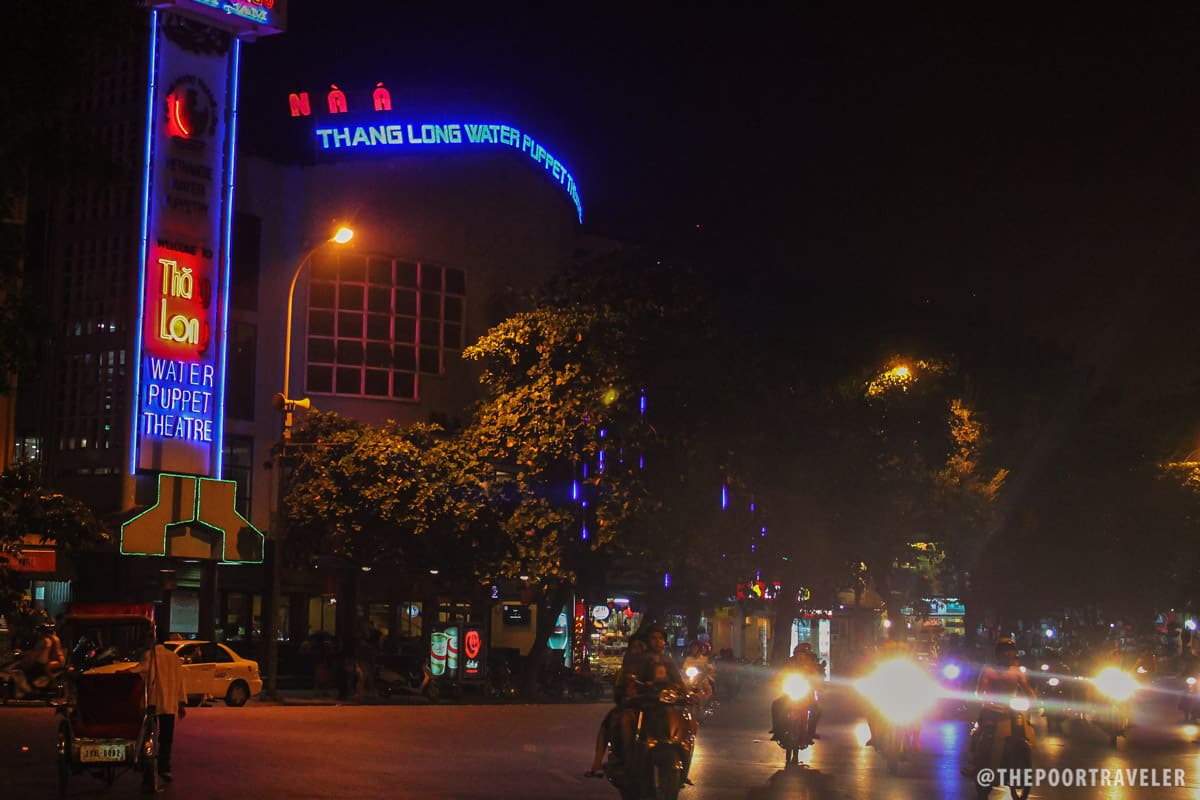
Fortunately, latecomers were still allowed to enter. We missed the first five minutes of the show but our front row seats made up for what we lost. Or, that’s what I want to believe.
Puppetry in Ancient Asia
Puppetry is a significant part of many ancient cultures in Asia. From India to China to Southeast Asia, the use of puppets was a very popular and effective tool in not just simple storytelling but also keeping such stories alive. The origins of these puppet plays are obscure but many even predate written text. Because many of these plays are passed on from generation to another through spoken words, some have unfortunately disappeared. Of course, a few have survived the test of time and the waves of cultural revolutions. The shadow puppets based on the Indian epic poems — the Ramayana and the Mahabharata — are examples of these.
They vary from culture to culture — the Wayang Kulit (shadow play) of Indonesia, the Bunraku of Japan, the Budaixi (glove puppets) of Taiwan, the Kathputli (string puppet) of India — but they all offer a brief look at the way of life of the ancient civilization that gave birth to the theater plays.
The Water Puppets of Vietnam
Known locally as mua roi nuoc, water puppetry enjoyed more popularity than some other forms in ancient Vietnam. Believed to be invented over a thousand years ago by farmers in Red River Delta (a rice-growing region in northern Vietnam), it was performed in religious ceremonies and also at the end of the harvest season. The rice paddy or the river served as the stage for the puppets which were maneuvered remotely via a device made of poles and strings dipped in the water. Some of the puppets were so complicated and heavy that at least two people were needed to control them.
The Thang Long Water Puppet Theater revives the art of mua roi nuoc and introduces it to tourists (and locals) at their regular shows in Hanoi. And with the art form, the many Vietnamese culture and subcultures throughout the country are presented and highlighted. It’s like Vietnam Culture 101 done in a wet and wooden fashion. The show is divided into segments, each featuring its own set of water puppets performing dances and folklore from many indigenous groups of Vietnam.
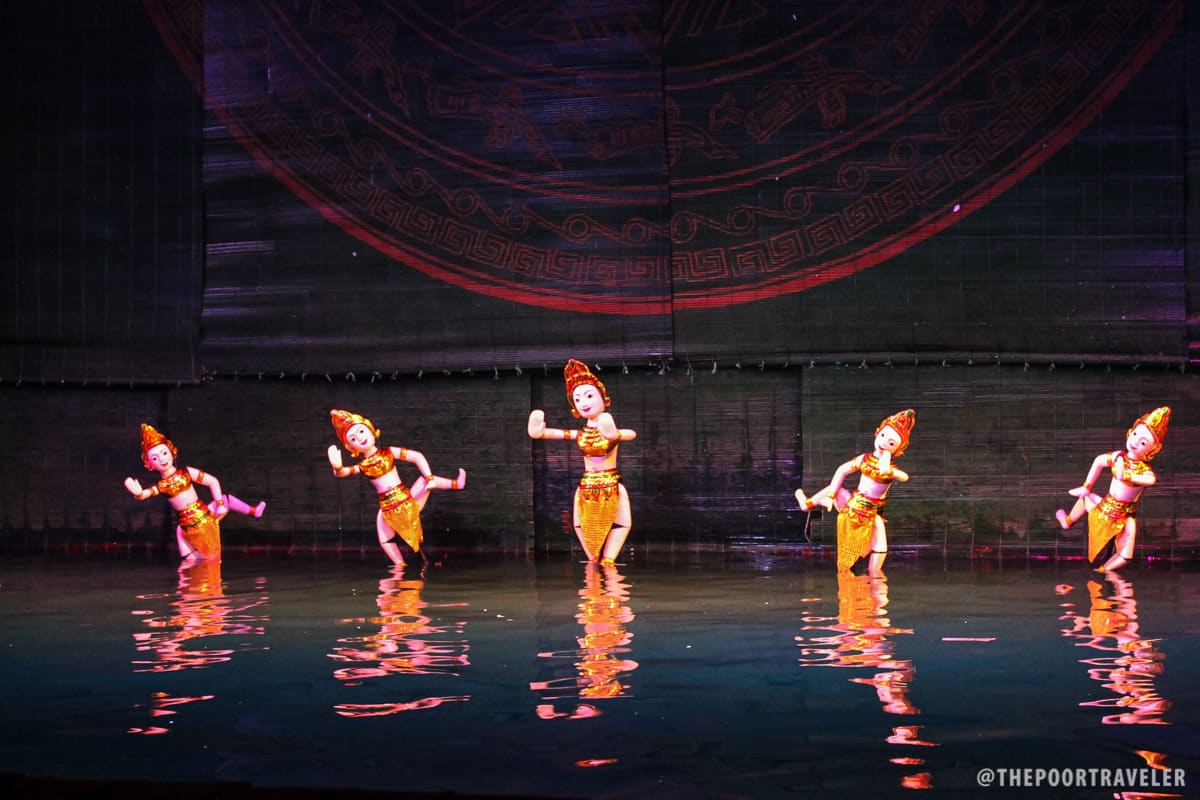
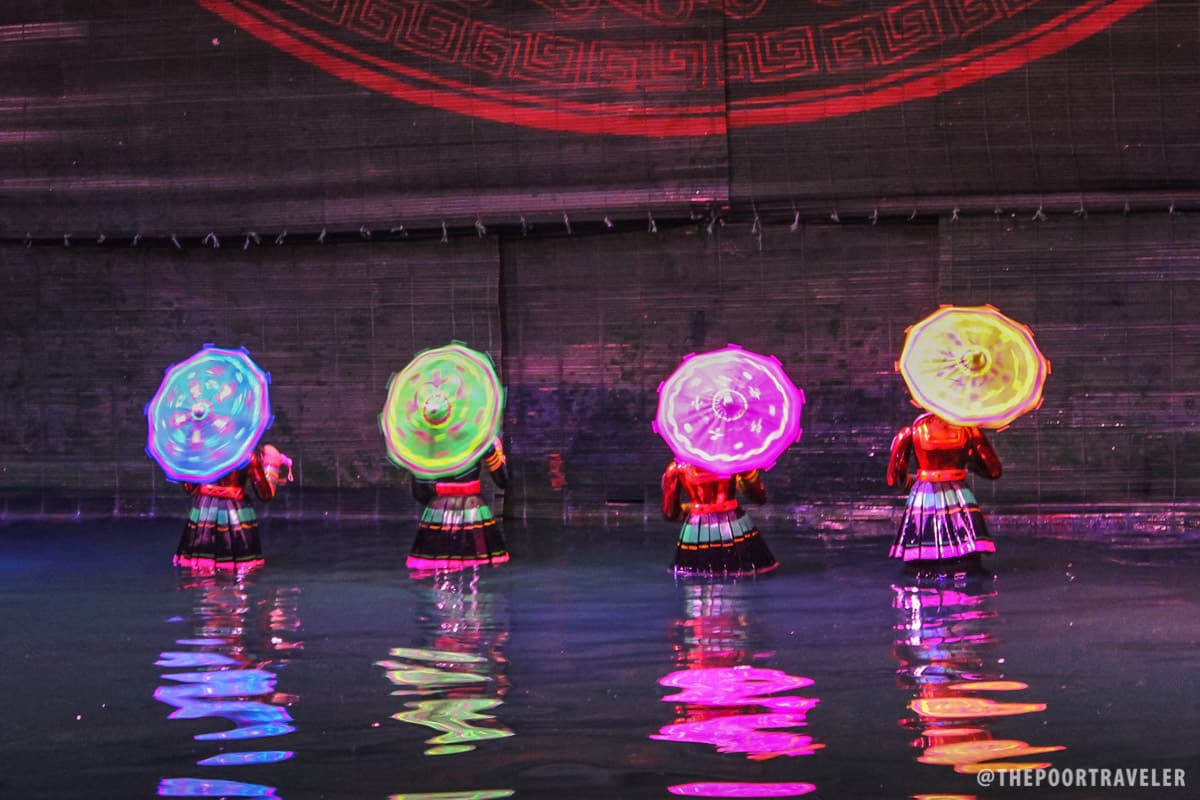
The puppets seem to dance to the tune played by real human beings tucked in one corner of the stage. One of the singers is also the narrator, who explains the background of the coming performance. On the other side of the stage is a white screen where the English translation is projected. The puppeteers stand in thigh-level water backstage.
At the end of the show, the puppet masters emerge from the backstage in full costume and they themselves perform a part of the dances previously showcased by the puppets. It was a great moment because in the course of watching the show, I kind of forgot that the puppets were being controlled by real people. Before the show, I was planning on capturing everything on video but I was in so much awe that the plan totally slipped my mind.
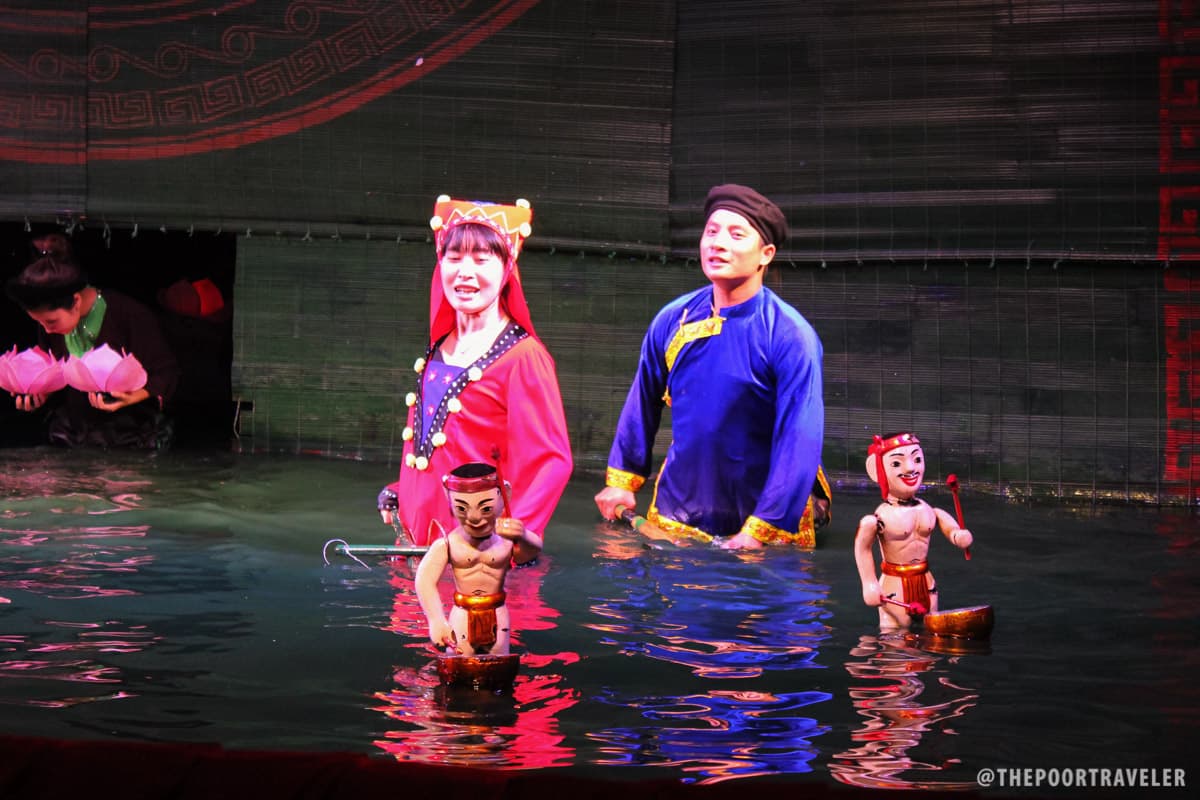
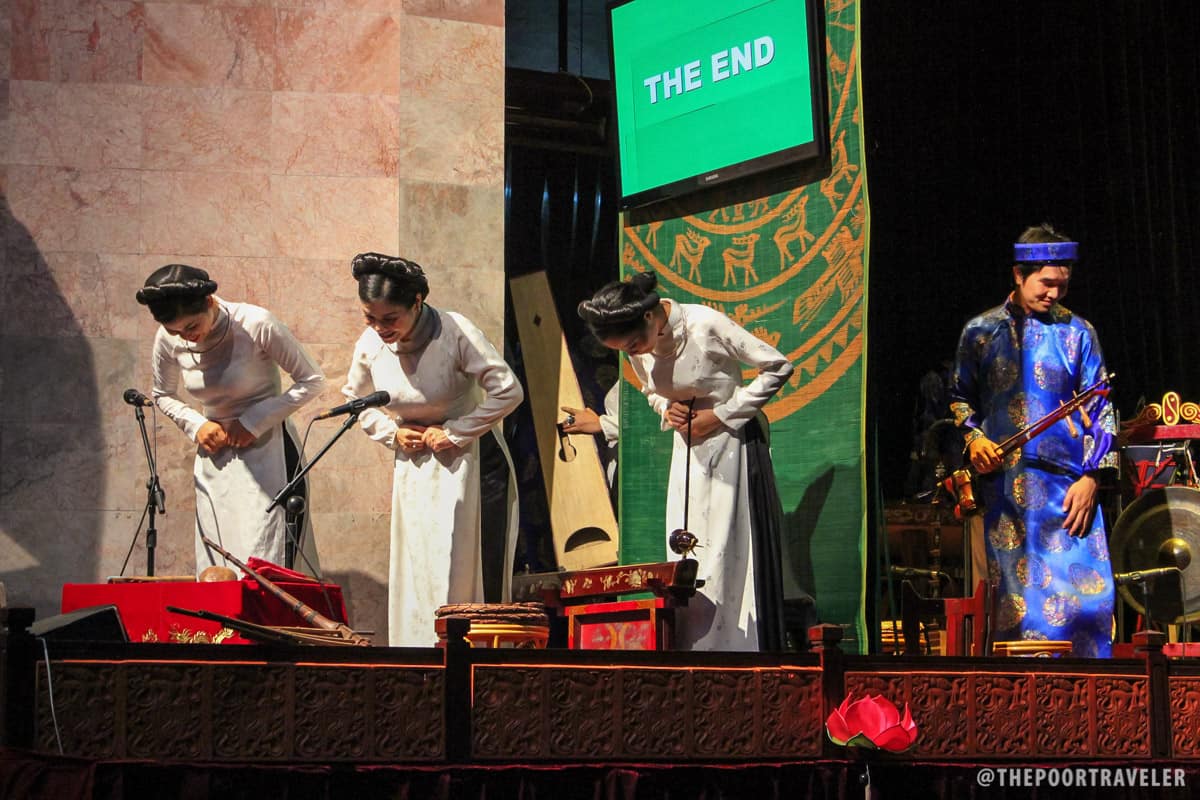
Josephine and I were all smiles when we emerged from the theater. “They were so cute,” she described the puppets. I entered the theater with no expectations at all so I was highly pleased with what I witnessed. The performances were nothing spectacular. The theater is nowhere near stellar. What makes it special is that it is not just a puppet show but a tour of Vietnam presented in a manner that is entertaining, enlightening, and highly encouraging. How they offered a great blend of education and entertainment is something worth rushing through Hanoi for. We exhausted much energy hurdling the city’s insane scooter traffic to get here, but what the water puppets gave us was totally worth it.
Thang Long Water Puppet Theater
57B, Dinh Tien Hoang Street, Hanoi, Vietnam
Admission Ticket: VND60,000 (USD2.8), VND100,000 (USD4.7)
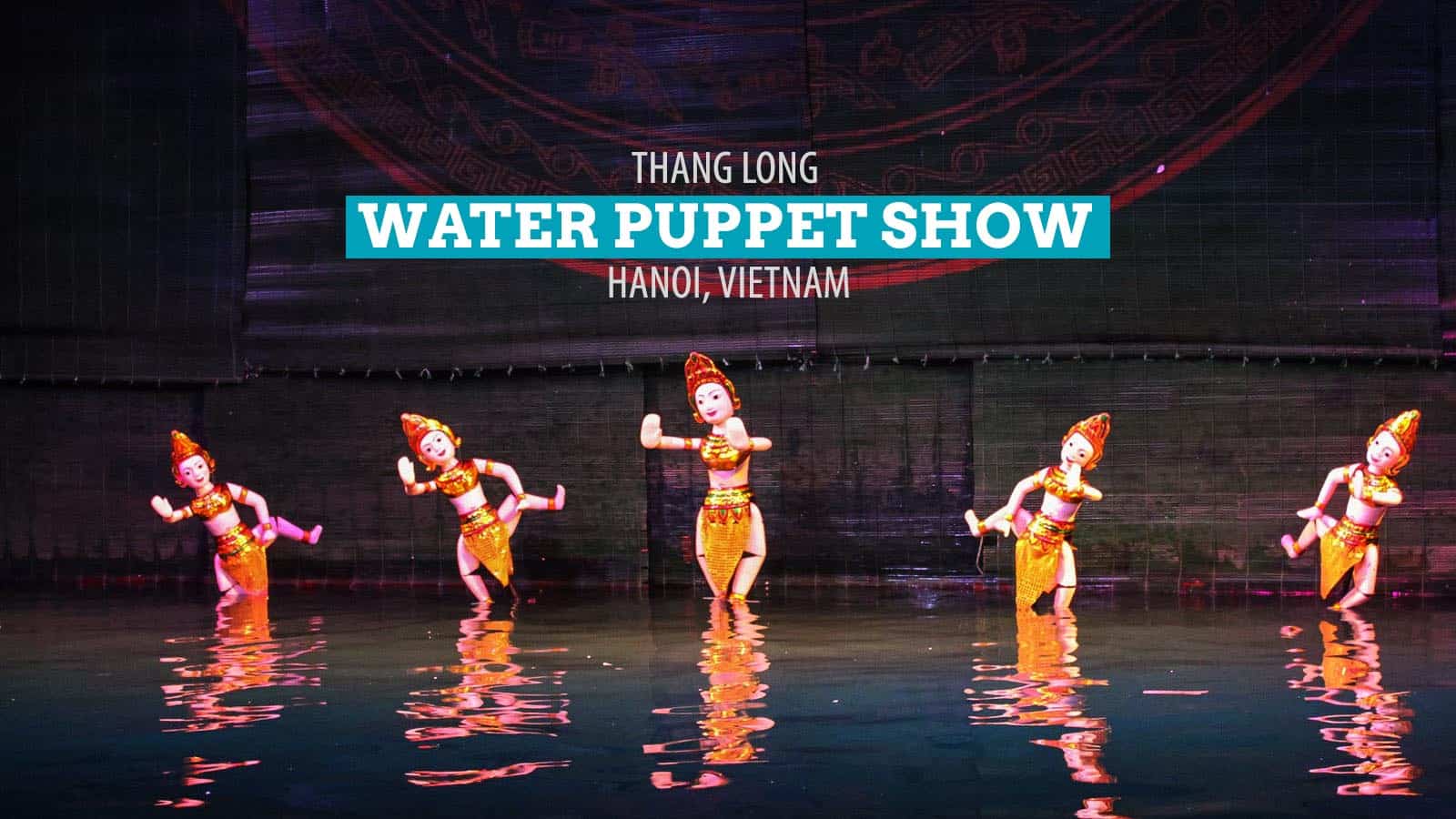























[…] final stop was to see the Water Puppet Show. It was “invented” over a thousand years ago by farmers in Red River Delta, it was performed in […]